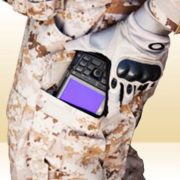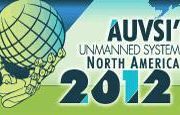The primary purpose of MIL-STD 810 is for “…generating confidence in the environmental worthiness and overall durability of materiel system design”(U.S. Army Developmental Test Command (DTC)). This standard establishes specifications and testing procedures for resistance to rain, shock, vibration, dust, humidity, salt fog, and extreme temperatures. 
Some think of 810 as “the” rugged standard, which of course, is not true. Many other standards come into play, such as MIL-STD 461 for electromagnetic emissions or the Navy’s MIL-S-901D for equipment mounted on US ships.
MIL-STD 810 is sufficiently complex and multivariable, that it may be more appropriate to think of it as a set of environmental standards, rather than a single specification. This is especially true when evaluating compliance. It is quite common for commercial companies to claim that their product “meets” MIL-STD 810, when actually it only meets a small fraction of the specifications.
Laboratories are not the real world
An inherent limitation in the standard, as noted by U.S. Army DTC, is that “In many cases, real-world environmental stresses (singularly or in combination) cannot be duplicated practically or reliably in test laboratories.” This not only emphasizes the importance of field/fleet verification trials, but also the experience of warfighters using the platform in theater. Not all developers have the advantage of AMREL’s record; the ruggedness of our mobile computer systems has been proven many times on battlefields around the world.
Semi, certified, or compliant?
Commercial vendors often use a bewildering and sometimes misleading set of terms to describe their product’s relationship to the standard. Here are some of the most common.
Compliant: Although MIL-STD 810 has specific tests, “compliant” can vary wildly in its meaning. According to Wikipedia, “When queried many manufacturers admit no testing has actually been done and that the product is merely designed/engineered/built-to comply with the standard.”
Semi: Like “compliant,” the meanings of “semi,” “business rugged,” and similar terms have no standard definitions. There is no mechanism to prevent a company from labeling any computer as “semi-rugged.”
Certified: The gold standard. Having a computer certified by a third-party is the strongest possible measure of compliance.
All AMREL platforms have been certified by third parties.
How to discover if a computer truly meets MIL-STD 810
To be certain, the person tasked with procurement needs to ask the vendor:
- Assuming testing was actually performed, which methods were used?
- Which parameters were tested?
- Was testing done by an independent testing facility?
- Did this computer pass field verification trials? Has it been successfully proven on a mission? In other words, does it have a Technology Readiness Level (TRL) of 9?
Of course, one could simply skip steps 1 through 4, and simply buy an AMREL computer. All AMREL computer platforms have been certified for MIL-STD 810 by an independent third party. Furthermore, AMREL also has a record of nearly two decades of proven ruggedness in theater. Front-line personnel know that our ROCKY line of computers successfully operate in the most extreme conditions. We make computers as rugged as our warfighters.
To learn more about AMREL’s computers strict compliance with MIL-STD 810 standards, see Testing.
To learn more about AMREL’s computers unique rugged features, see Rugged inside and out



